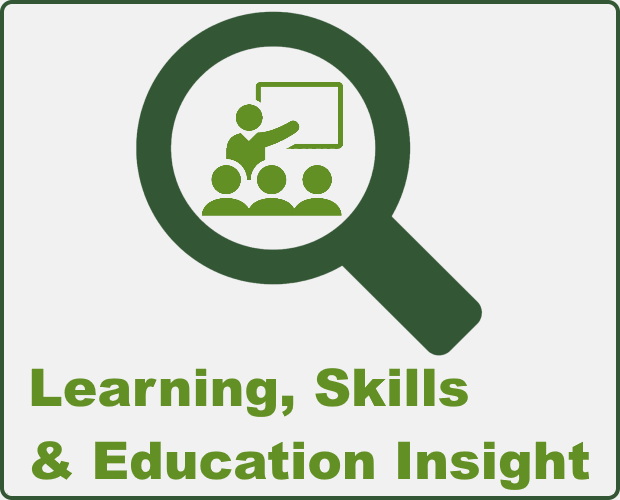The Role of Education in Structure a Comprehensive Educational Site for All
The role of education and learning in developing a detailed instructional website for all is increasingly recognized as crucial in today's varied society. This questions welcomes additional expedition right into the dynamics of academic equity and performance.
Relevance of Inclusivity

When educational sites prioritize inclusivity, they create a culture of belonging where every pupil really feels valued and encouraged. This atmosphere encourages active involvement, partnership, and mutual respect among learners, promoting more powerful social partnerships. Inclusive methods add to enhanced scholastic results, as pupils are extra likely to engage with the curriculum when they see their identifications mirrored and appreciated - School Drillers Education Insight.
Additionally, inclusivity prepares students for a diverse labor force and culture, furnishing them with the skills essential to navigate and contribute positively to different atmospheres. By welcoming inclusivity, academic sites not just fulfill their honest obligations yet likewise enrich the academic landscape, inevitably profiting pupils, instructors, and the neighborhood at huge. For that reason, promoting inclusivity is necessary for the improvement of efficient and equitable education and learning.
Leveraging Technology for Understanding
Integrating innovation into academic websites improves inclusivity by providing varied understanding devices and sources customized to specific demands. Digital systems enable the combination of multimedia resources, such as video clips, interactive simulations, and gamified learning experiences, which cater to differing finding out styles. This ease of access makes certain that students can involve with content in manner ins which resonate with them, promoting a much deeper understanding of subject matter.
Furthermore, technology promotes real-time responses and customized discovering paths. With flexible understanding technologies, instructional websites can assess private efficiency information, allowing tailored web content shipment that fulfills each learner's pace and proficiency level. This method not only enhances involvement but also empowers students to take ownership of their understanding trip.

Cutting-edge Mentor Approaches

One noticeable method is project-based discovering (PBL), which motivates students to participate in hands-on tasks that resolve complex inquiries or challenges. This method cultivates partnership, creativity, and analytical skills, every one of which are vital in today's workforce. Turned class have gained grip, where typical understanding is turned around; pupils examine lecture materials at home and involve in interactive tasks throughout course time, advertising much deeper understanding and retention.
One more substantial trend is the combination of gamification into education. By including game elements right into lessons, teachers inspire students and improve involvement through competition and rewards. In addition, distinguished instruction dressmakers finding out experiences to satisfy the varied demands of trainees, permitting customized learning paths that adapt to differing capacities and interests.
Collaboration and Area Building
Regularly, partnership and community structure are identified as vital components of effective education and learning, cultivating a inclusive and supportive learning atmosphere. These elements produce a structure where trainees, teachers, and community participants can participate in meaningful communications, boosting the educational experience for all individuals.
Cooperation motivates the sharing of ideas, sources, and proficiency, helping with a richer discovering process. This vibrant assists to damage down silos within the academic ecological community, advertising interdisciplinary approaches that can deal with intricate problems. By collaborating, educators can develop innovative curricula that mirror varied perspectives while fulfilling the varied demands of students.
Community building works together with partnership, as it cultivates a feeling of belonging amongst all stakeholders. They are more most likely to spend time and resources into cumulative goals when people really feel connected to their educational area. This shared commitment can cause raised motivation, boosted academic outcomes, and higher retention prices.
Furthermore, promoting partnership and area building can also extend past the classroom, visit this page entailing parents, regional companies, and companies. These partnerships can supply assistance and sources that boost instructional possibilities, eventually contributing to a more extensive instructional site for all.
Gauging Success and Influence
The effectiveness of collaboration and neighborhood structure in instructional setups can be examined via different metrics that measure success and impact. These metrics might consist of student interaction degrees, scholastic performance, retention rates, and neighborhood feedback. By using measurable data such as examination ratings and college graduation prices, educational stakeholders can determine the overall performance of joint efforts.
Additionally, qualitative assessments, such as surveys and emphasis teams, provide valuable insights into individual fulfillment and viewed benefits of community-building activities. Frequently tracking these metrics permits educators to recognize locations of toughness and those requiring renovation, making web sure that collective efforts remain impactful and focused.
Moreover, longitudinal researches can help measure the long-lasting impacts of academic partnerships on trainee results and neighborhood growth. These evaluations can reveal trends in time, highlighting how sustained collaboration fosters an atmosphere conducive to learning and growth.
Ultimately, defining success in educational settings calls for a multifaceted strategy, incorporating both measurable and qualitative data. By continually reviewing the impact of partnership and community-building campaigns, instructional websites can improve their strategies, guaranteeing they fulfill the diverse demands of all stakeholders included.
Final Thought
Finally, education and learning functions as a cornerstone in developing a comprehensive instructional site that focuses on inclusivity for all students. By integrating innovative mentor techniques, leveraging technology, and cultivating partnership within areas, a interesting and helpful understanding environment is produced. These elements not only boost individualized discovering experiences but also cultivate a society of belonging. Ultimately, the dedication to inclusivity and equity prepares trainees for success in a diverse and interconnected world, enhancing the transformative power of education and learning - School Drillers Education Insight. read the article
The importance of inclusivity in academic websites can not be overemphasized, as it plays an important duty in promoting a learning setting that fits diverse histories and abilities. Inclusivity makes certain that all trainees, regardless of their socio-economic standing, ethnic culture, gender, or finding out abilities, have equitable accessibility to educational sources and chances.When educational sites prioritize inclusivity, they produce a culture of belonging where every trainee feels valued and encouraged. By accepting inclusivity, instructional sites not just accomplish their moral responsibilities however also improve the instructional landscape, inevitably benefiting pupils, teachers, and the community at huge.The efficiency of partnership and community structure in educational settings can be analyzed through different metrics that gauge success and influence.